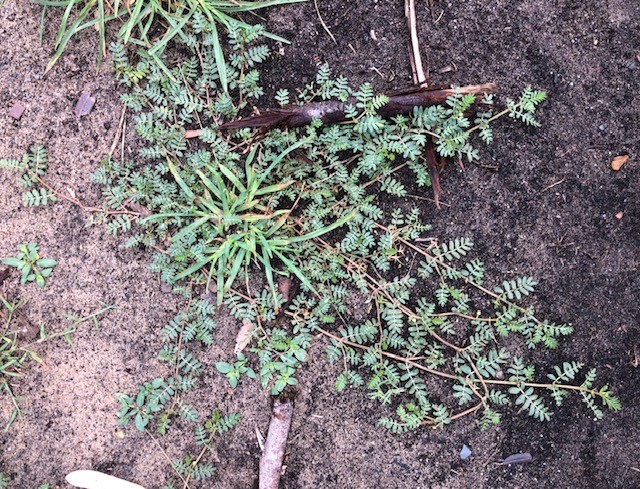An ambitious proposal to turn Buttonderry Waste Facility at Jilliby into an income-producing asset has at least one Central Coast resident concerned.
The shortage of landfill sites in Greater Sydney and the State Government’s legislation for food organics and garden organics (FOGO) could result in a bonanza with Central Coast Council working on a business case for introducing a new system for FOGO at Buttonderry.
But Ian Harvey of Ettalong Beach is urging caution and calling on Central Coast Council to list the weed known as Caltrop as noxious after it has appeared in several Council assets where mulch and top dressing had been used with products processed at the Jilliby facility.
“What alerted me was when I found a large infestation of Caltrop (cat heads) around the newly finished Umina Skate and Sports Precinct in February,” Harvey said.
“Having a farming background, I recognised the weed immediately and set about doing a bit of urgent weeding so children, parents and dogs didn’t come to harm before Council staff could attend.
“I subsequently found Caltrop where top dressing had been added onto some local verges then most likely transported on the tyres of our posties’ bikes and by walkers.”
Harvey said he contacted the noxious weeds officer at Council and was told Caltrop was not listed as noxious in the Central Coast local government area and was allowed to be put in green bins which ended up at Jilliby.
He said he also checked with NSW Department of Primary Industries who pointed him to the standard Section 2.2 of AS 4454 which required products to be free of viable plant propagules – vegetative structures that could become detached from a plant and grow a new plant – when tested in accordance with Appendix M of the standard.
Appendix M sets out a methodology that will show the presence or absence of propagules of many of the worst environmental weeds.
He said while Caltrop needed to be dried then incinerated to kill the fine seeds inside the spiky burr, most NSW councils were affected by Protection of the Environment Operation (Clean Air) Regulation 2022 and had no practical way of drying Caltrop seeds and then burning them.

“I urge NSW DPI and Council to uphold and audit the Standard, list Caltrop as noxious for Central Coast LGA, educate residents to identify this and other noxious weeds, wrap them and place them into the red bins for landfill,” Harvey said.
A Council spokesperson said while Caltrop was a nuisance weed which was widespread across Australia, there was no legislative requirement, under the NSW Biosecurity Act 2015, for landowners to control this weed, as it is not listed as a ‘priority’ weed under the legislation.
The spokesperson said the term ‘noxious’ was discontinued when the former Noxious Weeds Act 1993 was repealed and the Biosecurity Act came into force.
She said landowners wanting to manage Caltrop could dispose of the waste materials in their green bin to be accepted at Buttonderry and the facility’s mulching operation of green waste was undertaken in accordance with Australian Standard AS 4554 – 2003: Composts, soil conditioners and mulches.




Be the first to comment on "Calls to list Caltrop weed as noxious on Central Coast"